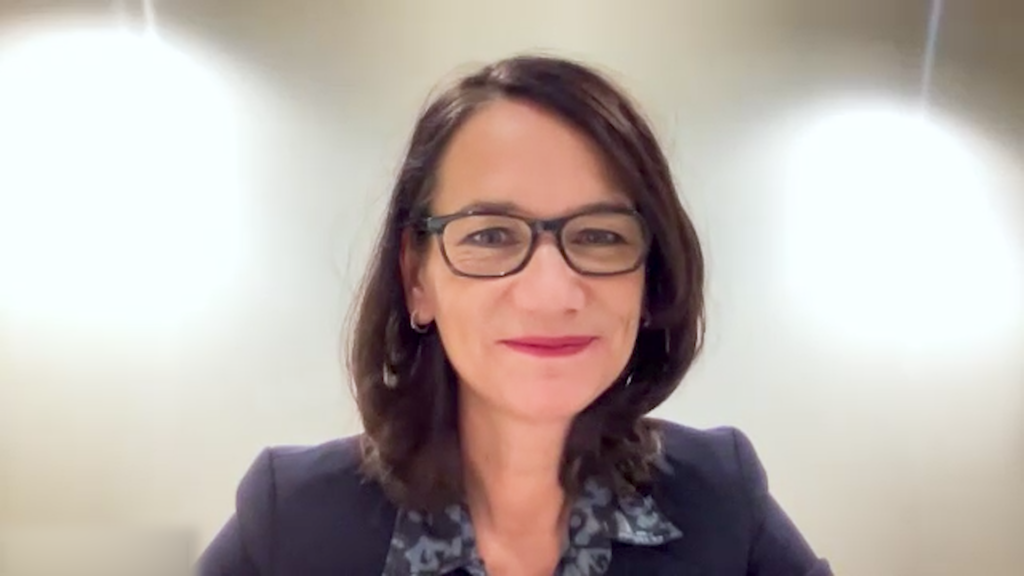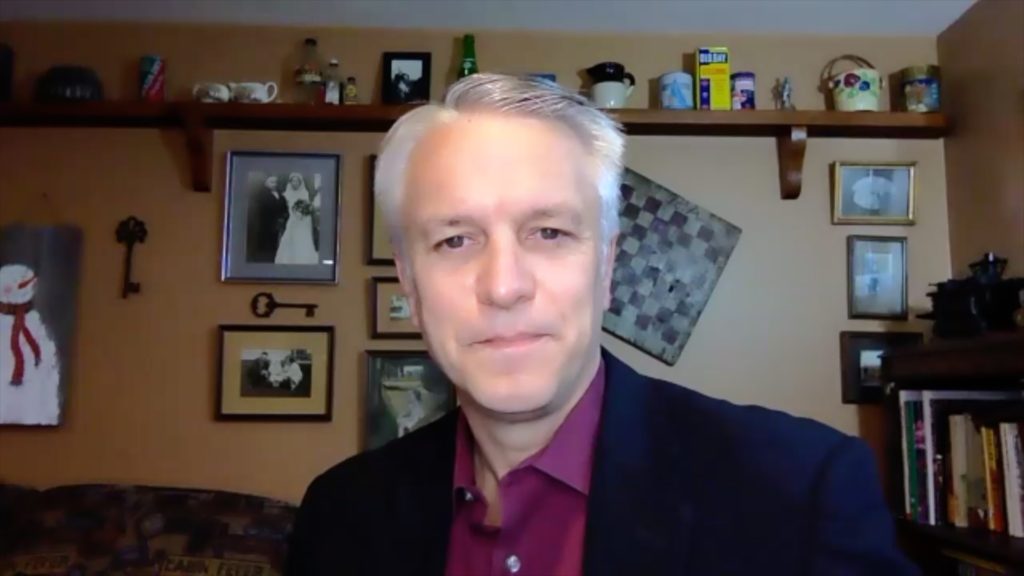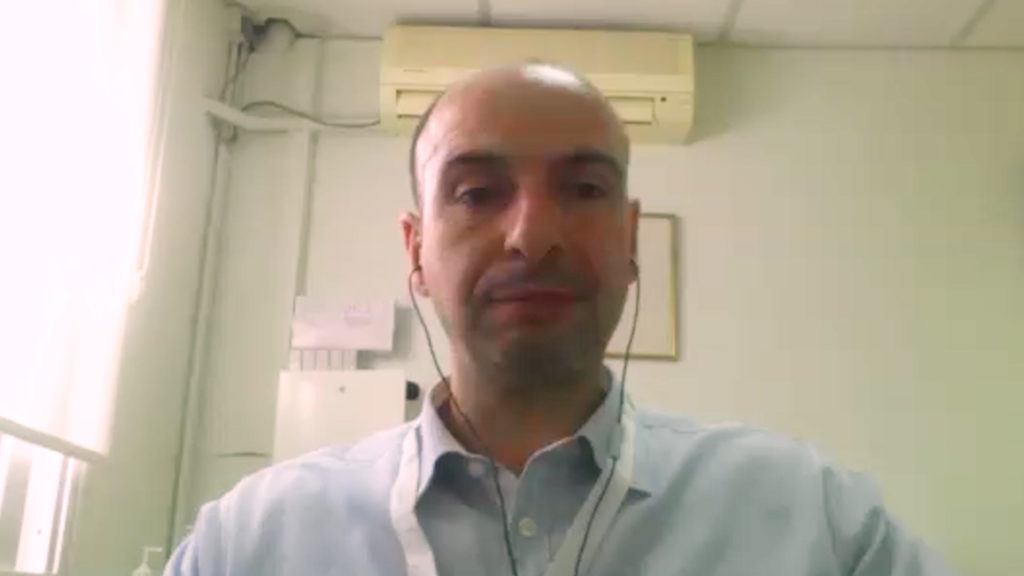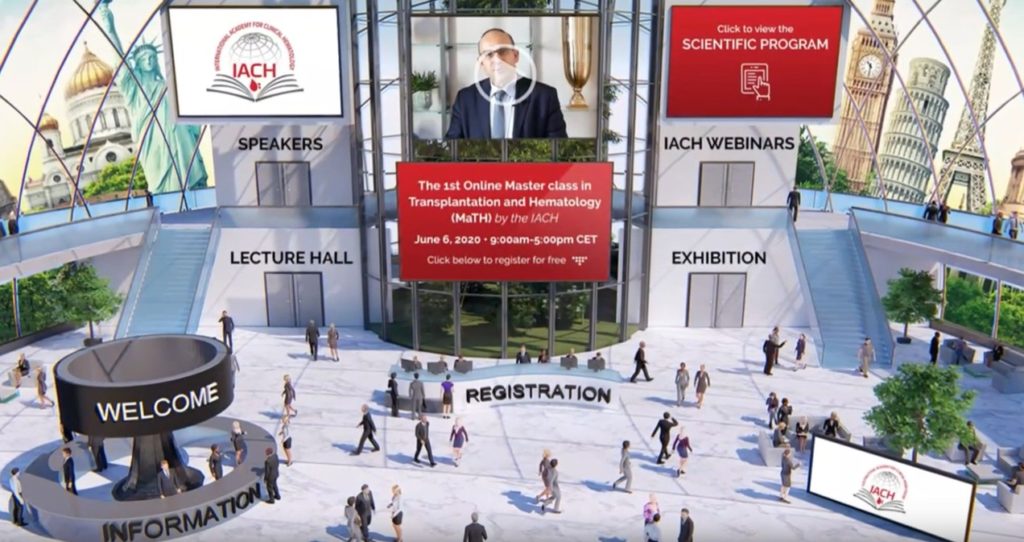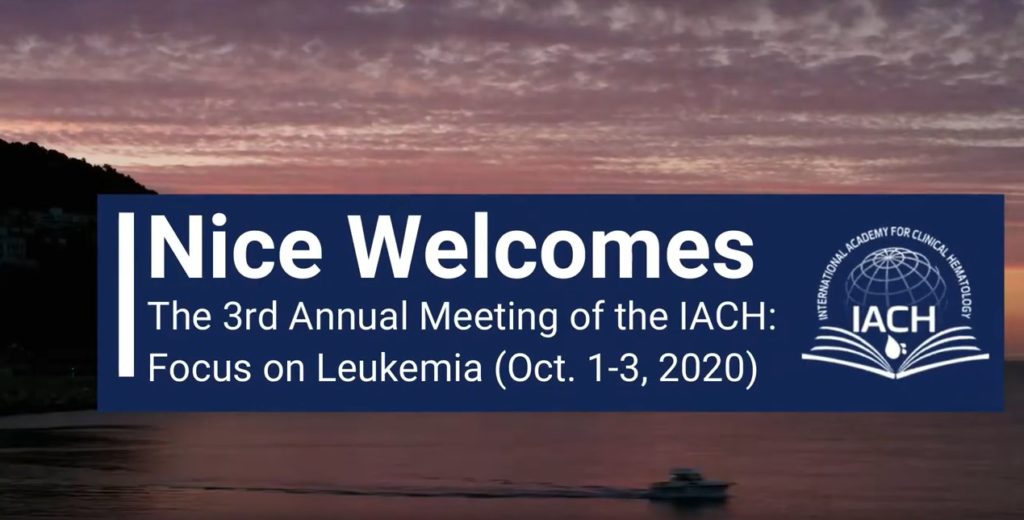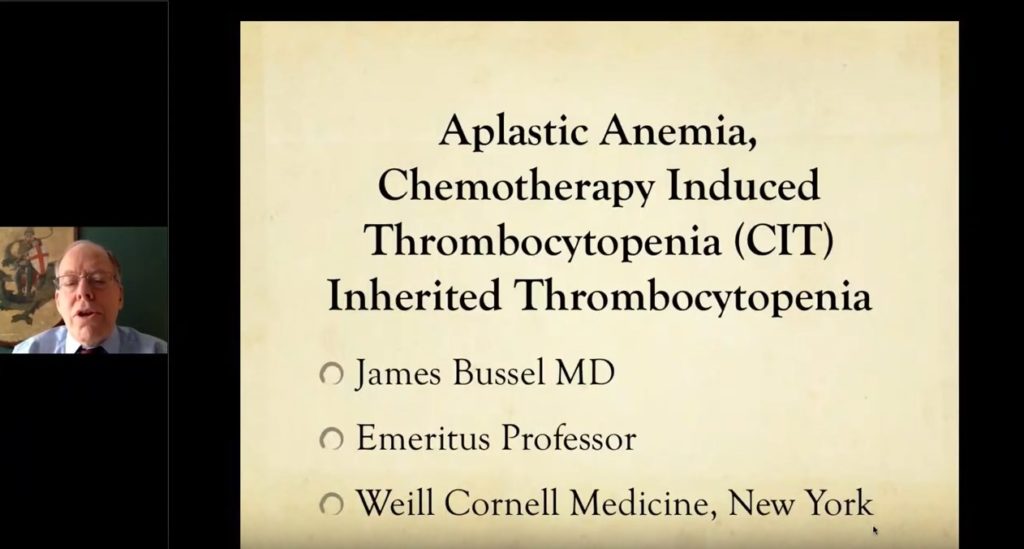While chimeric antigen receptor (CAR) T cells grabbed most of the headlines at the 60th American Society of Hematology (ASH) Annual Meeting, which was held from 1–4 December 2018, in San Diego, CA, US, another cellular therapy emerged as a hot topic. Epstein–Barr Virus (EBV) is a herpes virus that typically causes a mild to moderate self-limiting viral illness in healthy individuals since it establishes latency in B cells and the infection is maintained at a low level by a T cell-mediated immune response.1 However, in patients with primary immunodeficiencies affecting the T cells, as well as immunosuppressed transplant recipients, EBV has been found to contribute to the development of a number of lymphoproliferative disorders including Burkitt’s lymphoma, nasopharyngeal carcinoma and Hodgkin’s and non-Hodgkin’s lymphomas.1,2</sup?
EBV-associated post-transplant lymphoproliferative disorder (EBV-PTLD) is a serious and potentially life-threatening disorder in which EBV is reactivated after allogeneic haematopoietic stem cell transplantation (allo-HSCT) or organ transplantation. It is caused by the use of immunosuppressive therapies and generally occurs in the first year following transplantation.3 The reduction of immunosuppression therapy is the ideal approach for PTLD treatment, but this may not be feasible. The current standard of care is monoclonal antibodies directed against CD2O (rituximab).4 However, for patients with rituximab-refractory EBV-PTLD, the outlook is bleak, with an average survival time of only 16–56 days.5 Chemotherapy is the only available treatment for these patients but is not an attractive option given the fact that these patients are usually very sick, heavily pre-treated and have comorbidities.
EBV-cytotoxic T lymphocyte (CTL) therapy offers an alternative approach to the treatment of EBV-PTLD. This is a form of adoptive immunotherapy that employs virus-specific T cells derived from primary haematopoietic transplant donors or from a bank of normal donor T cells. Cellular therapy was first shown to be effective against EBV-PLTD over 20 years ago,6 but has not been widely adopted, partly because of the low incidence of PTLD (1–5%) and partly due to the perceived efficacy of rituximab. Recently, following increasing reports of poor outcomes in patients receiving rituximab for EBV-PTLD,7–9 interest in EBV CTL has been revived, and it is being developed at the Memorial Sloan Cancer Center in collaboration with Atara Biotherapeutics. Data from 57 patients involved in a phase II clinical trial (CinicalTrials.gov Identifier: NCT01498484) were presented at the 2015 Annual Meeting of the American Association for Cancer Research (AACR) and showed a response rate of 67%.10 As a result, in February 2015 the FDA granted breakthrough therapy designation to tabelecleucel (tab-cel®, Atara Biotherapeutics, South San Francisco, CA, US), an off-the-shelf CTL activated against EBV, in the treatment of patients with rituximab-refractory, EBV-PLPD.11 Tabelecleucel is also available to eligible patients with EBV-associated haematologic and solid tumours through an ongoing multicentre expanded access protocol clinical study.
Researchers from the Memorial Sloan Cancer Center presented further data on the use of CTL at the 2018 ASH meeting. Nineteen patients, who had previously received rituximab (n=17), radiation therapy (n=6) and/or chemotherapy (n=9) were treated for EBV-PTLD involving the central nervous system arising after allo-HSCT (n=12) or solid organ transplant (n=7). These patients received EBV CTLs that were generated from their primary transplant donor either at the time of or after the patient underwent the transplant (n=7), tabelecleucel from a third-party donor (n=11) or from both types of donor (n=1). The overall response rate was 63%, including complete responses in seven patients (37%) and durable partial responses in five patients (26%). The 1-year overall survival (OS) was 60% with an OS rate of 91.7% at 1 year among patients who responded to therapy and only 14.3% among those who did not respond. Among 10 patients treated for isolated central nervous system disease, eight responded to CTL, with an OS rate of 70% at 1 year. The safety profile of CTL therapy was good: eight patients reported adverse events of severity grade 3 or higher, with one patient experiencing a possibly related grade 3 adverse event.
In a video interview recorded at ASH 2018, Dr Mohamad Mohty described this response rate as ‘amazing’. Dr Mohty described cellular therapy as the ‘superstar’ of this ASH meeting and commented on the number of presentations on CAR T therapies, but at the same time urged us not to neglect other cellular therapies. ‘In addition to CAR T cells, we are seeing the development of other cellular therapies that are proving very effective in serious and life-threatening conditions,’ Dr Mohty said. He also commented on the need for these therapies to become more widely available: ‘EPV-PTLD is a serious, life-threatening condition. We urgently need to make these CTLs directed against EPVs available.’ While he agrees that randomised clinical trial data would be ideal, he considered, based on the available evidence, that we can use these cells rapidly and safely. View the full video interview here.
Two phase III clinical studies, MATCH (ClinicalTrials.gov Identifier: NCT03392142)12 and ALLELE (ClinicalTrials.gov identifier: NCT03394365),13 are currently evaluating tabelecleucel for the treatment of EBV-PTLD following allo-HSCT and solid organ transplant, respectively. Tabelecleucel is also being investigated in a phase Ib/II study (ClinicalTrials.gov identifier: NCT03769467)14 in combination with pembrolizumab in patients with EBV-associated nasopharyngeal carcinoma. Results are expected within a year but in Dr Mohty’s opinion, these therapies are ready to be used now.
Dr Mohty considers this year’s ASH meeting to be ‘a true turning point in the field of haematology, whether malignant or non-malignant diseases’. One major aspect is the advent of cellular therapy and immune therapy. He said: ‘We are seeing the progressive retirement of chemotherapy, being replaced by more specific cellular therapies.’ Other cellular therapies include gamma delta T cell therapies, NK-based therapy, and CTLs directed against other viruses. Dr Mohty concluded: ‘This is a very exciting time of development and this will translate into improvements in the outcome of patients who are in need.’
References
1. Taylor GS, Long HM, Brooks JM, et al. The immunology of Epstein-Barr virus-induced disease. Annu Rev Immunol. 2015;33:787–821.
2. Young LS, Rickinson AB. Epstein-Barr virus: 40 years on. Nat Rev Cancer. 2004;4:757–68.
3. Heslop HE. How I treat EBV lymphoproliferation. Blood. 2009;114:4002–8.
4. Dominietto A, Tedone E, Soracco M, et al. In vivo B-cell depletion with rituximab for alternative donor hemopoietic SCT. Bone Marrow Transplant. 2012;47:101–6.
5. Fox CP, Burns D, Parker AN, et al. EBV-associated post-transplant lymphoproliferative disorder following in vivo T-cell-depleted allogeneic transplantation: clinical features, viral load correlates and prognostic factors in the rituximab era. Bone Marrow Transplant. 2014;49:280–6.
6. Papadopoulos EB, Ladanyi M, Emanuel D, et al. Infusions of donor leukocytes to treat Epstein-Barr virus-associated lymphoproliferative disorders after allogeneic bone marrow transplantation. N Engl J Med. 1994;330:1185–91.
7. Styczynski J, Gil L, Tridello G, et al. Response to rituximab-based therapy and risk factor analysis in Epstein Barr Virus-related lymphoproliferative disorder after hematopoietic stem cell transplant in children and adults: a study from the Infectious Diseases Working Party of the European Group for Blood and Marrow Transplantation. Clin Infect Dis. 2013;57:794–802.
8. Caillard S, Porcher R, Provot F, et al. Post-transplantation lymphoproliferative disorder after kidney transplantation: report of a nationwide French registry and the development of a new prognostic score. J Clin Oncol. 2013;31:1302–9.
9. Uhlin M, Wikell H, Sundin M, et al. Risk factors for Epstein-Barr virus-related post-transplant lymphoproliferative disease after allogeneic hematopoietic stem cell transplantation. Haematologica. 2014;99:346–52.
10. Prockop S, Doubrovina E, Barooudy K, et al. Abstract CT107: Epstein-Barr virus-specific cytotoxic t lymphocytes for treatment of rituximab-refractory Epstein-Barr virus-associated lymphoproliferative disorder. Cancer Research. 75(15 suppl):CT107.
11. Atara Bio: FDA Grants Breakthrough Therapy Designation to Epstein-Barr Virus (EBV) Targeted T-Cells for Treatment of EBV-Associated Lymphoproliferative Disease, 2015. Available at: https://globenewswire.com/news-release/2015/03/02/711263/10122578/en/FDA-Grants-Breakthrough-Therapy-Designation-to-Epstein-Barr-Virus-EBV-Targeted-T-Cells-for-Treatment-of-EBV-Associated-Lymphoproliferative-Disease.html (accessed 22 January 2019).
12. ClinicalTrials.gov. Tabelecleucel for Allogeneic Hematopoietic Cell Transplant Subjects With EBV+ PTLD After Failure of Rituximab (MATCH). ClinicalTrials.gov Identifier: NCT03392142. Available at: https://clinicaltrials.gov/ct2/show/NCT03392142 (accessed 6 February 2019).
13. ClinicalTrials.gov. Tabelecleucel for Solid Organ Transplant Subjects With EBV+ PTLD After Failure of Rituximab or Rituximab and Chemotherapy (ALLELE). ClinicalTrials.gov Identifier: NCT03394365. Available at: https://clinicaltrials.gov/ct2/show/NCT03394365 (accessed 6 February 2019).
14. ClinicalTrials.gov. Tabelecleucel in Combination With Pembrolizumab in Subjects With EBV+ Nasopharyngeal Carcinoma (ATA129-NPC-202). ClinicalTrials.gov Identifier: NCT03769467. Available at: https://clinicaltrials.gov/ct2/show/NCT03769467 (accessed 6 February 2019).






